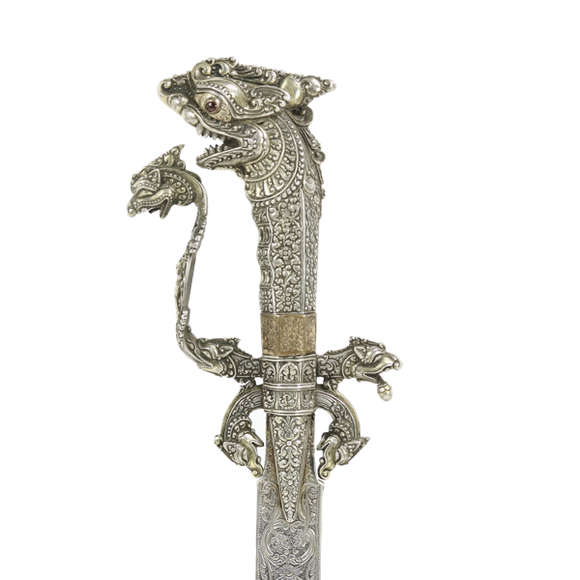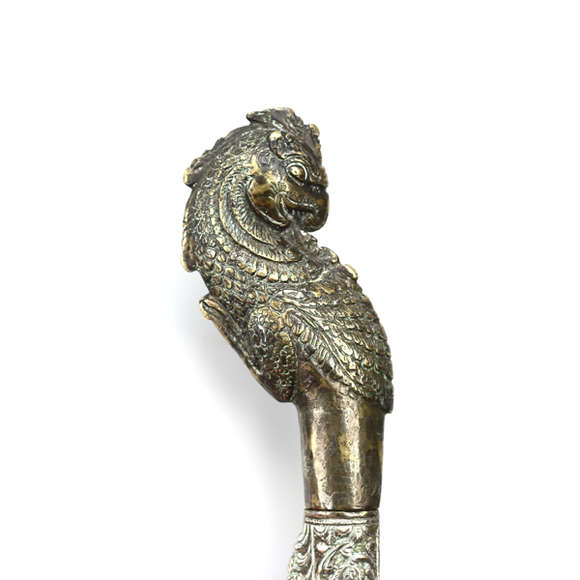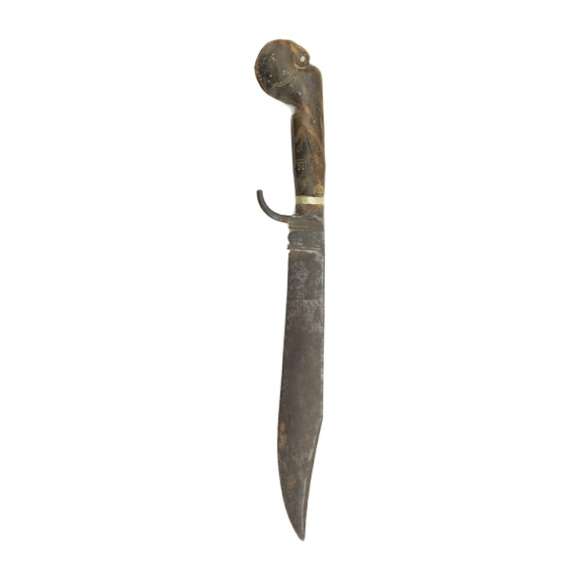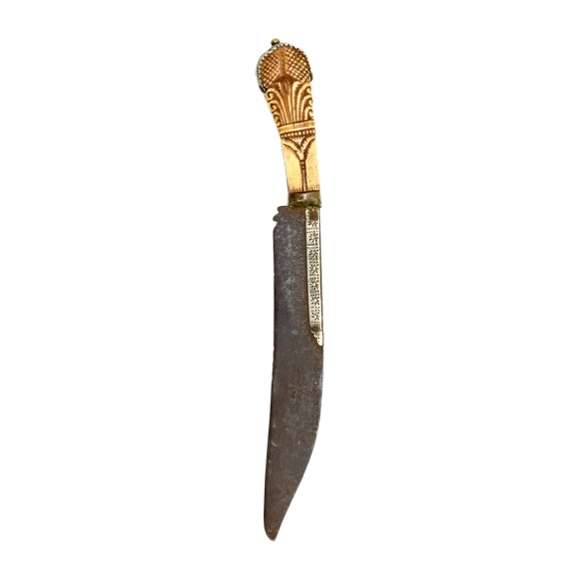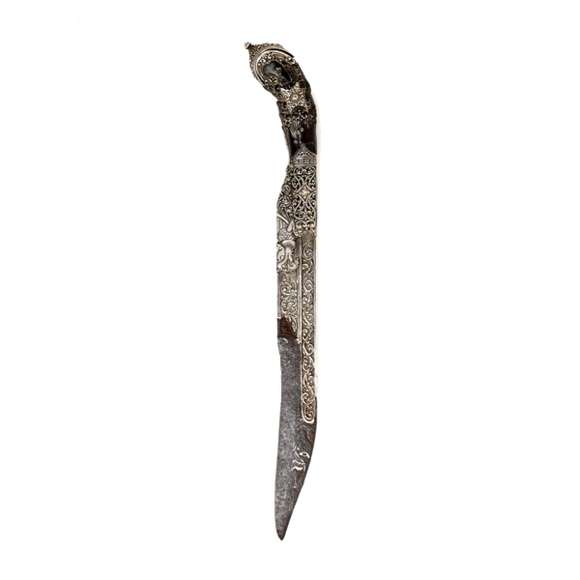Language: Sinhala
Source: Literature
Description
Sérapéṅdiya mūna literally means "sérapéṅdiya head". It is a term given by Deraniyagala for those quillons on a Sinhalese kasthāné that terminate in sérapéṅdiya heads. The sérapéṅdiya is a mythical bird.
In most cases, the knuckle guard and the quillon opposite of it terminate with these mythical bird heads. Defining feature of the sérapéṅdiya is the end of the beak curling downwards and inwards. Those of makara tend to turn upwards.

The typical complex quillons on a fine Sinhalese kasthāné, showing the heads of sérapéṅdiya and makara.
Other parts
|
|
|
|
|---|---|---|
|
|
# English 1. Pommel |
Sinhala gediya |
|
|
2. Hilt | mitta |
|
|
"Lion faced hilt" | simha mūnu mitta |
|
|
3. Knuckle guard | ath väsma / ath häde |
|
|
4. Quillons | vari sārkawa / sérapéṅdiya mūna |
|
|
5. Side-plates | alluva |
|
|
6. Blade | kadu patha / isa |
|
|
7. Grooves | peeli |
|
|
8. Edge | agissa |
|
|
9. Point | thuda |
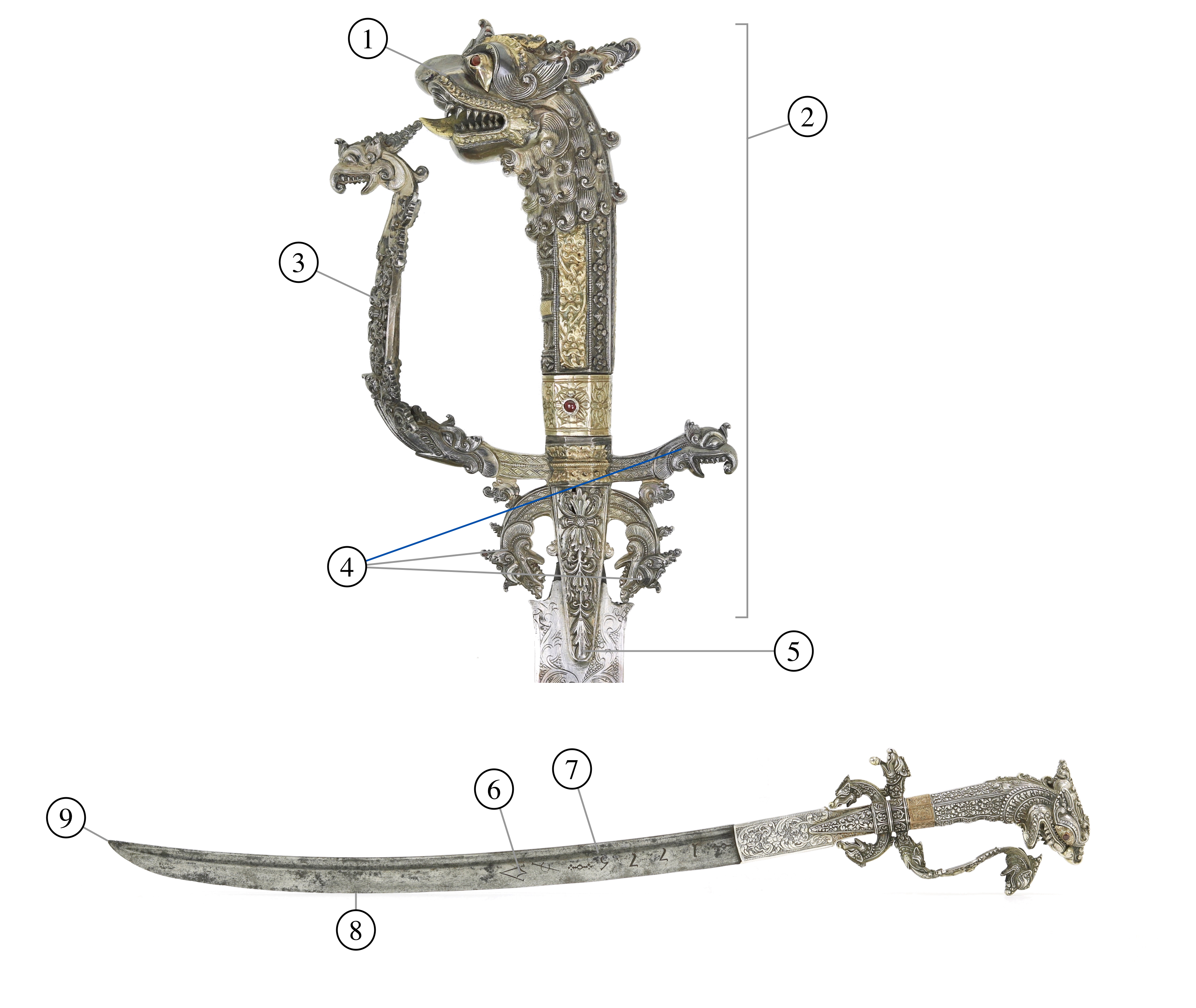
References
1. P. E. P. Deraniyagala; Sinhala Weapons and Armor. The Journal of the Ceylon Branch of the Royal Asiatic Society, Volume XXXV, No. 95, part III. 7th December 1942. Pages 112-113.

